Space Creators: Building the Guardians of the Galaxy
James Gunn's Guardians of the Galaxy opens on Earth, where a young Peter Quill sits alone in a hospital corridor, listening to his walkman. Prop master Barry Gibbs lead the search for the perfect cassette player, which took four months of internet searching and yielded only 16 cassette players in various states of disrepair that would be suitable for the film. Every detail in the film was chosen on purpose, often at great effort. In our opening scene, Peter's mother is dying of cancer, and one of the things she shared with him was her love for music, specifically pop songs of the 70s. This dash of earthly pleasure courses through nearly every frame of this intergalactic tale of misfit heroes and brooding villains, and informed Gunn and his team at every level of production.
Although Guardians of the Galaxy first appeared as a comic book created by Arnold Drake and Gene Colan in Marvel's Super-Heroes, Issue #18, in January of 1969, the filmmakers drew from the modern Guardians team, which was published in "Guardians of the Galaxy, (Vol. 2), Issue #1 in May of 2008. Created by Dan Abnett and Andy Lanning, the filmmakers focused on five of the seven heroes depicted in Vol. 2—Star-Lord (Chris Pratt), Rocket Raccoon (voiced by Bradley Cooper), Gamora (Zoe Saldana), Drax the Destroyer (Dave Bautista) and Groot (voiced by Vin Diesel). Here's a look at some of the incredible work that went into creating Marvel's latest franchise.
Costume Design/Makeup/Prosthetics
Oscar-winning costume designer Alexandra Byrne is no stranger to creating the looks for a sprawling cast of heroes, villains and otherworldly creatures—she’s worked on Thor, The Avengers and 300: Rise of an Empire. As demanding as all of those jobs were, Guardians of the Galaxy presented the unique challenge of creating costumes for various species of wildly different shapes, sizes and skin tones. Yet it wasn’t just the principal cast Byrne was responsible for—in order to sell a film set on several distant planets made up of an assortment of alien races, she had to make sure the background actors looked as unique and credible as possible.
Byrne looked to the comics first to understand the worlds she was tasked with outfitting, then took Gunn’s vision to heart—the world of Guardians of the Galaxy is non-Earthly, but also not sci-fi, either. “I tend to do mood boards, which are big collage boards of any idea, any reference that I feel has to do with a character or a point in the story,” Bryne said in the production notes.
Byrne had to design costumes by adhering to the rules of each galaxy—that includes factoring in weather, culture, species, skin tone and what that part of that specific place’s role is in the mega narrative. Yet there is one rule Byrne carries with her on every film, regardless of whether she's working on a space epic or a Victorian era period piece—you have to fit the clothes to the actor’s body. “The real process is in fitting and fabrics,” Byrne said.
Byrne worked closely with production designer Charles Wood, makeup and hair designer Elizabeth Yianni-Georgiou and special effects makeup designer David White in creating unique looks for each character. Yianni-Georgiouhad to create makeup that could cover the varied skin colors of the alien races that wouldn't come off, or ruin Byrne's costumes, after being blasted by water or covered in dirt and mud. After a lot of testing, Yianni-Georgiou and her team created a spray-on makeup that worked on every character.
Over the course of the film, the special make-up effects department created approximately 1,250 prosthetic applications, with 50 makeup artists working in teams on each character. Getting each cast member camera ready was more difficult for some than for others. David White’s prosthetic work began months before shooting, and included creating 3D life-sized versions of Rocket and a bust of Groot that could be used on set to give the filmmakers references for visual effects, lighting, and to see how the characters might actually function. He also began with head and body casts for Gamora and Drax, the villains Nebula (Karen Gillan) and Korath (Djimon Hounsou), and the opportunist Yondu (Michael Rooker). While he and his team were molding and sculpting these casts, they were also looking for the perfect material to use. There were some 2,000 humanoid alien molds that were created, each colored to its specific alien race—yellow, blue or pink.
Characters
Peter Quill (Chris Pratt)
Befitting a character abducted from Earth in the 1980s, Byrne gave Quill a flavor of that decade without being overly bound by it. “It’s just a reference point and it’s great to have that to kind of bounce back to,” Byrne said. Quill might lack Han Solo’s classic vest from the original Star Wars, but there’s a similar scruffy, bad boy look that they both share.
Gamora (Zoe Saladna)
As the last surviving person of her race, Byrne felt she had freedom when it came to outfitting Gamora—there were no other similar characters she had to dress along with her. Gamora required minimal prosthetic work, save for some enhancements on her cheeks and on her forehead that are biomechanical lines drawn into the skin itself. White and his team removed the eyebrows and created a new, slicker eyebrow shape. The element that took the longest to perfect was her green skin color.
Rocket (voiced by Bradley Cooper)
Creating Rocket and Groot, two principal characters who were ultimately entirely CGI creations, took many, many months. Rocket’s storyline is heartbreaking—a raccoon who was brutally operated on, over and over, turning him into a hybrid being with incredible human skills while still retaining his essential animal behavior. To blend the anthropomorphic characteristics with the movements of a typical raccoon was a massive challenge. Rocket needed to be expressive and emotional without becoming a cartoon. Because Rocket’s face is so different from a human’s, the motion-capture techniques so expertly employed in Dawn of the Planet of the Apes wouldn’t work as well here. Yet, James Gunn’s brother Sean did don the performance capture suit so Gunn could shoot him for references. Gunn got what he needed from using the movements of his brother, the performance of Bradley Cooper, and his own performance if he wasn’t getting exactly what he needed. Between those three elements Gunn had enough to send to the effects team who then went to work creating the gun toting bad ass that is Rocket. Gunn told The Wrap that his effects artists created whole elements of both Rocket and Groot that they came up with on their own, the benefit when so many people are required to create a single character.
Groot (voiced by Vin Diesel)
“I am Groot.” These three words represent almost the totality of Vin Diesel’s dialogue, yet they required thousands of takes, something you'll understand once you see the film. Diesel was filmed while delivering his lines so the animators had a reference when creating the sentient, courageous tree that is Groot. Polish puppeteer Krystian Godlewski played Groot during production to give the visual effects team the references and data they needed, as well as giving the cast members physical characters to work alongside. Although Groot looks ancient, the filmmakers wanted him to feel young and convey a sense of wide-eyed awe of the world. The task was further complicated by the need to make Groot both tree-like and creature-like. “There is a fine line when blending anatomical pieces—like that of a human—with sloping shapes and unique form lines that don’t feel human at all,” Charles Wen, head of visual development at Marvel said in the production notes. “That is where we found our Groot.”
Drax (Dave Bautista)
It took a five-person team of makeup artists five hours per day to do Drax’s makeup application. Drax’s look is all about his tattoos—the story of his life is told in the markings that cover his body. Those tattoos were actually an application the makeup artists applied in 18 separate pieces across his body and face, after White and his team took a full body cast of Dave Bautista and broke the pieces of it down individually to create the tattoos on each section, where the artists told Drax’s sad life story (wife and children killed by Ronan, revenge obsessed). White and his team chose keloid scarring for Drax’s look, which is a technique used by people who tattoo their own skin. The artwork is actually raised a few millimeters above the surface of the skin. By the end of the shoot, Bautista had sat in the makeup chair for a total of about seven days.
Nebula (Karen Gillan)
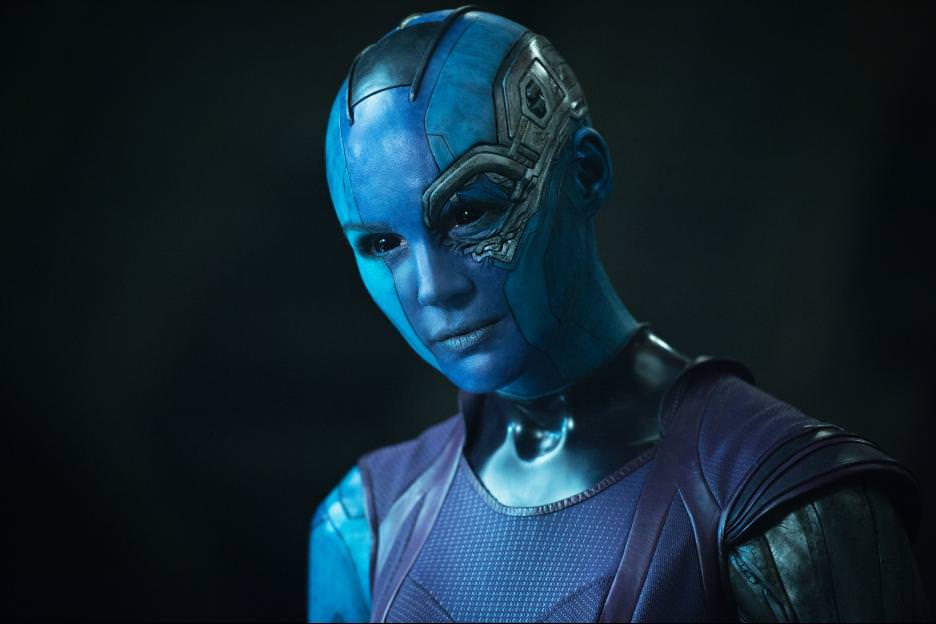
For the ferocious Nebula, the Scottish actress and model Karen Gillan needed to have her head shaved as close to the skull as possible so her angular, streamlined look could be achieved. Her makeup was made up of seven pieces and took nearly five hours a day to apply. Byrne gave Nebula a style befitting her connection to the Dark Aster and her role as a major villain, but one that allowed for individuality amongst her comrades, Ronan, Korath and Gamora.
Yondu (Michael Rooker)
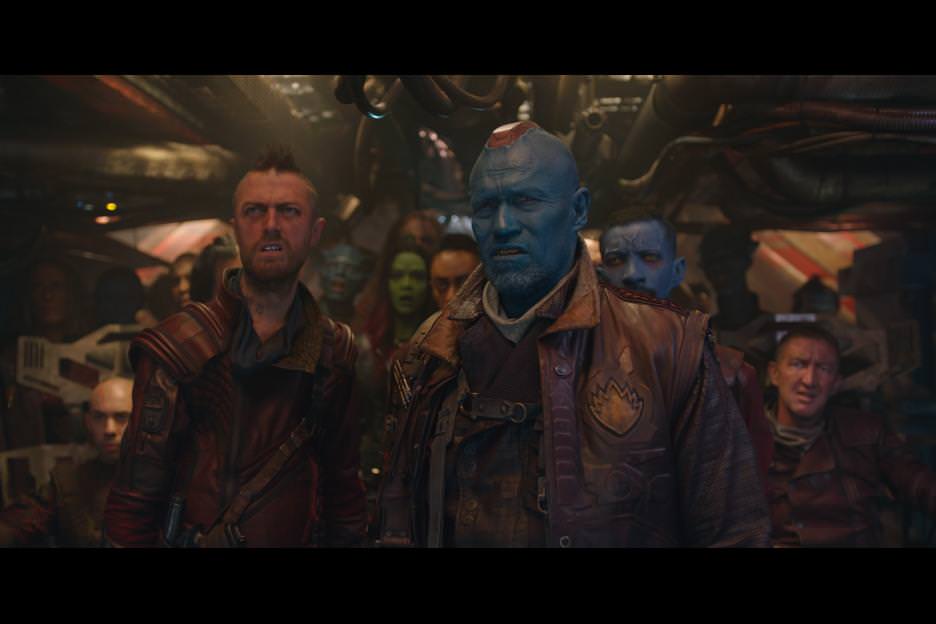
As the dangerous, semi-adoptive parent of Peter Quill, Yondu’s look is reminiscent of our hero (in fact, he no doubt inspired the look)—leather jacket (concealing his deadly whistle-operated weapon), dark pants and boots, appropriate for someone who travels the galaxy finding precious objects for the highest bidder. White created a Mohawk for Yondu complete with lights inside it that travel back and forth.
Production Design
Morag
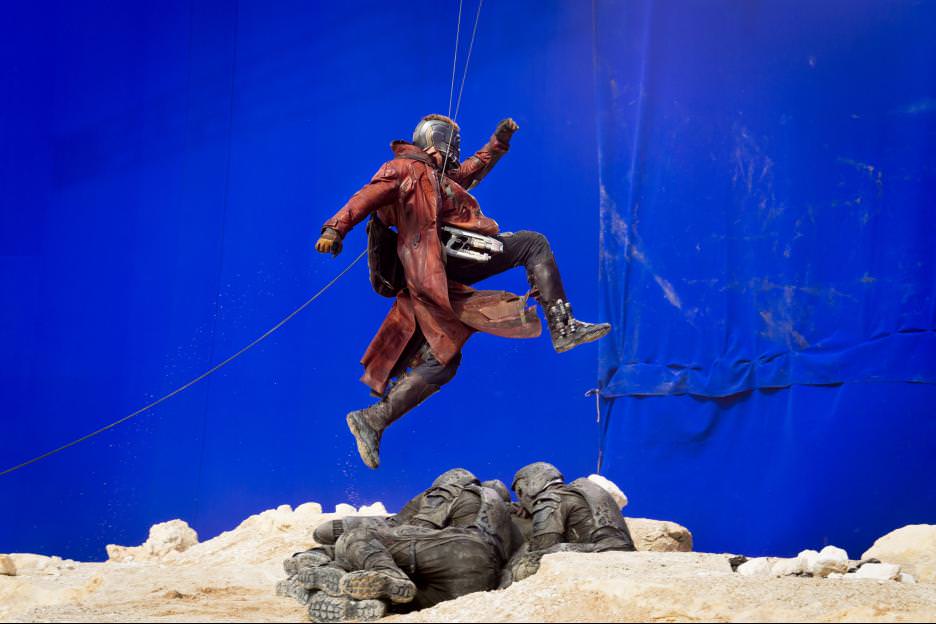
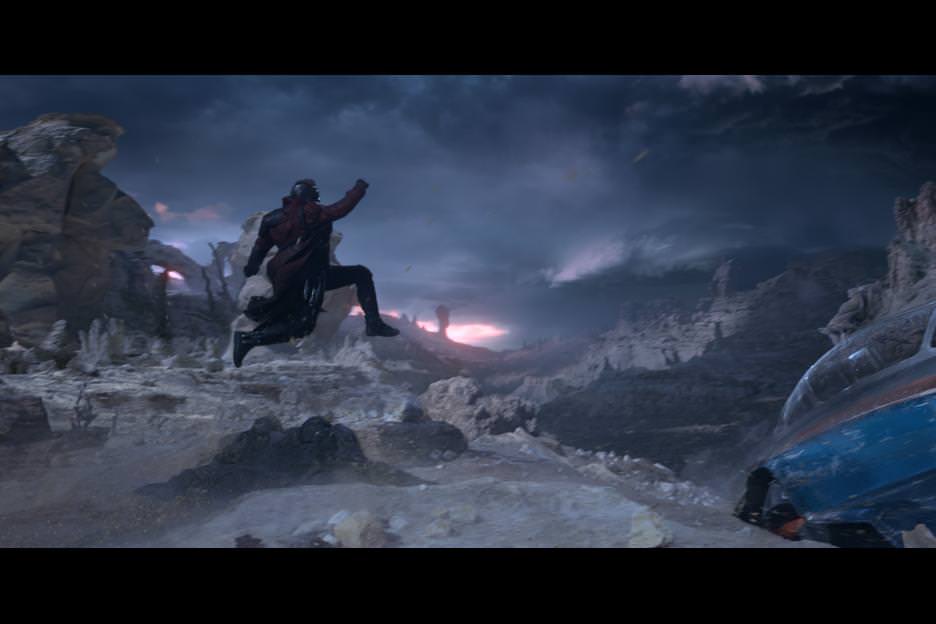
The film’s first otherworldly location is the abandoned planet Morag, a bleak, unstable hunk of sand blasted rock, sopping caves and dangerous geysers. Morag was once home to a thriving civilization but is now a dank ruin, home to vicious rat-like creatures and a subterranean river with massive, snapping alien eels. Production designer Charles Wood and his team created a neutral palette for the exterior shots, where Peter Quill lands his ship and makes his way towards the cave system. Once inside, Quill locates the secret temple he's looking for, and it’s here the color palette shifts into golds, blues and greens to accentuate the jewel-like interior, and the precious object Quill will find that sets our story into motion.
The Kyln
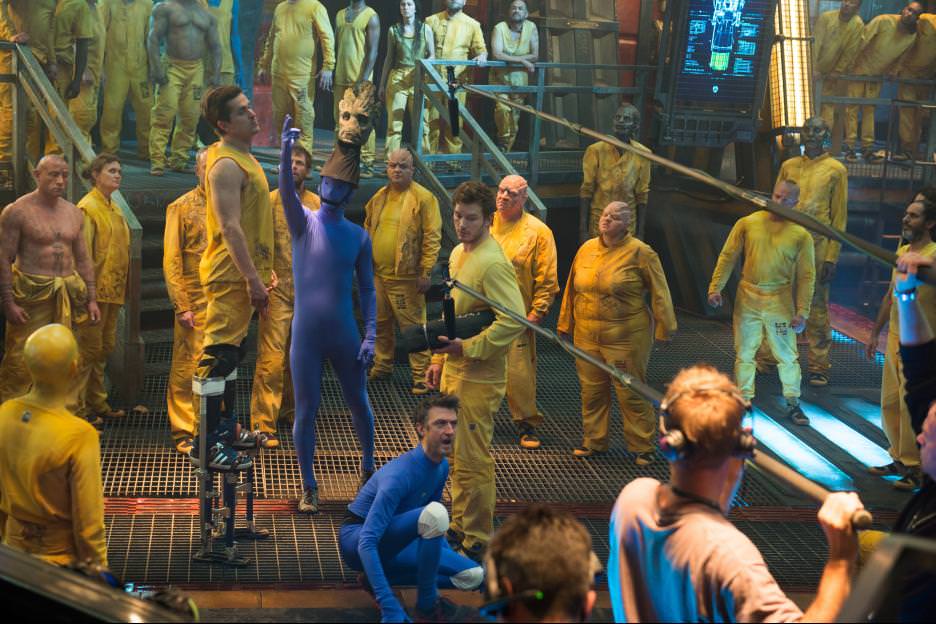
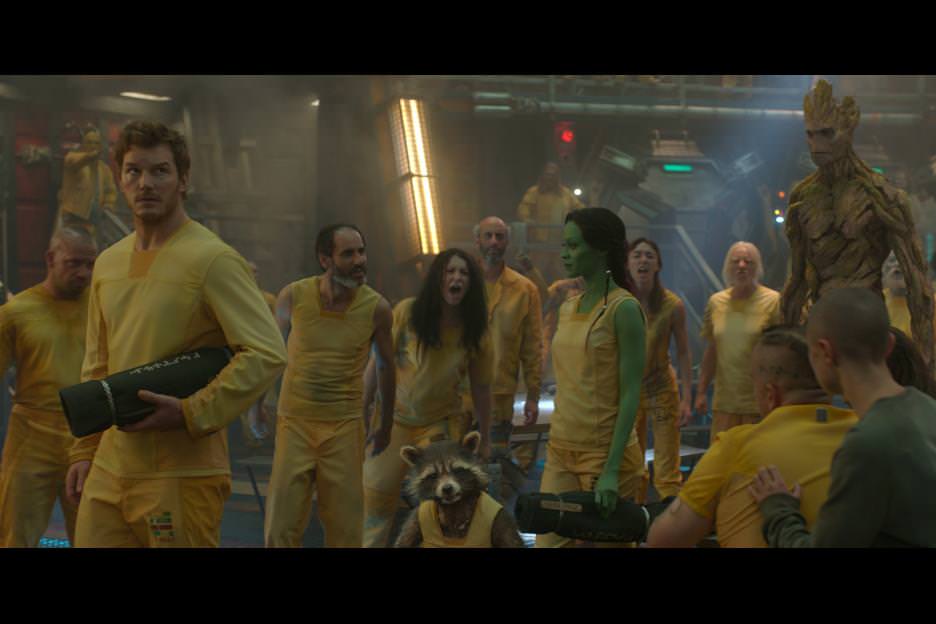
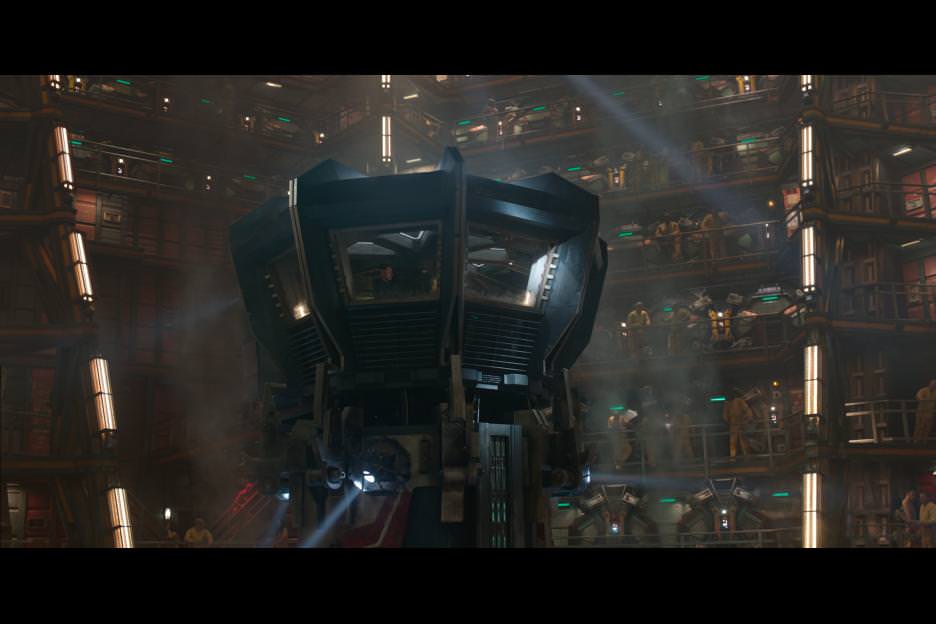
A crucial location for the story, the Kyln is the space prison where our Guardians meet and form their loose, fury-fueled affiliation. It was also the largest build for the production. This 360-degreesetrequired 100 tons of steelacross its three levels, which was extended in post production by another 200 feet. The byzantine prison includes a series of steel corridors that connect cells to bays, built on a steel frame on wheels. The Kyln went through several transformations throughout the shoot, with crew members working around the clock to finish highly complex, skilled transitions, turning the cylindrical prison into The Collector’s lab, which is Taneleer Tivan’s museum of curios (most of which are living beings).
Xandar
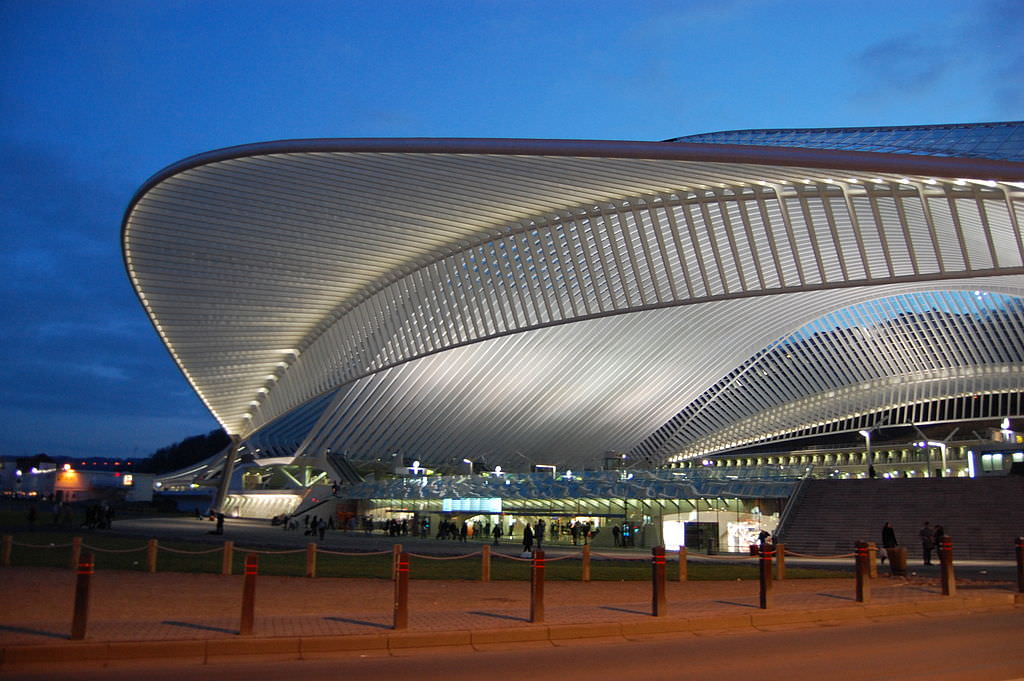
The most Earth-like planet in the galaxy, and the one that the Kree radical, Ronan, wants to obliterate, Xandar is the brightest environment in the film. Created almost entirely on computer, the planet nonetheless has a very real inspiration—the architecture of the Spanish architect Santiago Calatrava, specifically the gorgeous steel, white concrete and glass arch of the Liege train station he designed in Belgium.
Knowhere
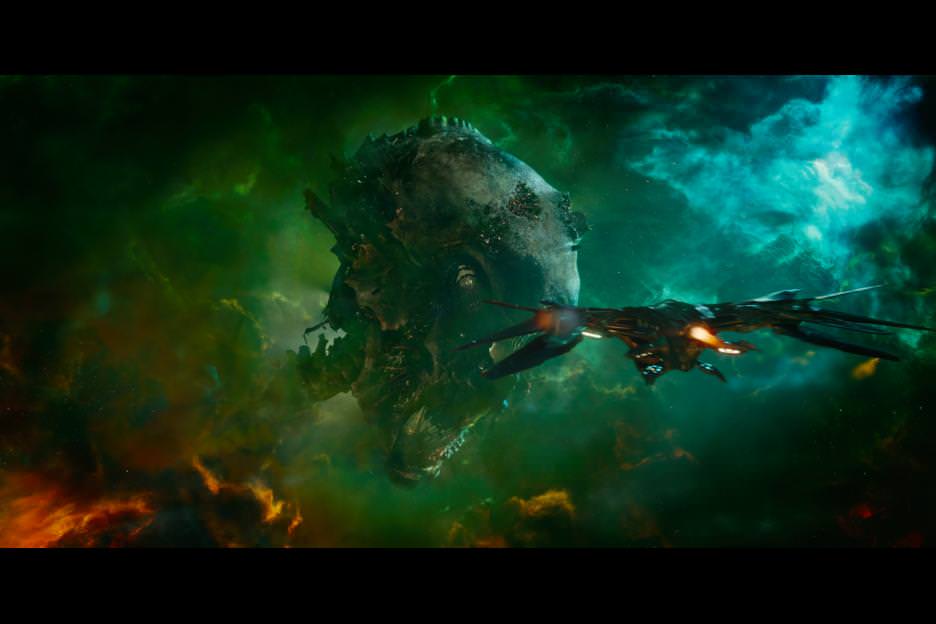
Perhaps the most inspired of all the locations the Guardians team built, either by hand or by pixel, is the mining outpost called Knowhere, which is actually the decapitated head of an ancient celestial being. Wood and his team were inspired by the look of gritty, greasy industrial mining towns, and built both the Boot of Jemiah (a bar which is both an homage to the Mos Eisley Cantina from Star Wars and a unique take on an intergalactic watering hole) and the Collector’s Lab with an eye towards inspired dirtiness.
Spacecraft
The Milano
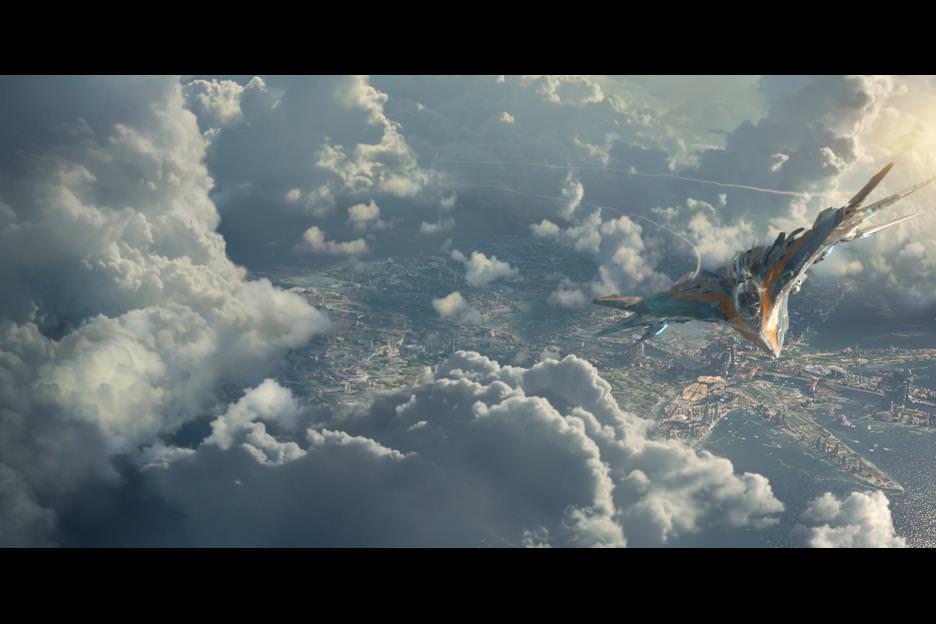
While every space epic is going to be compared to George Lucas’s operatic Star Wars original trilogy, and that includes the spaceships that the characters command, the creators of Guardians of the Galaxy had many real world influences, from Calatrava’s architecture for the sets to Chuck Yeager’s early test flights in the Bell Aircraft X-1 rocket plane for Quill’s spaceship, the Milano. Spaceships in space epcis are as much a part of the personality of their pilots as the wardrobe they wear or particular grudge or chip on their shoulder they carry. For the Milano, it sports the dented, battle-tested grandeur of Luke’s X-wing fighter by the end of A New Hope, but also a chrome, muscle-car look that’s more representative of Quill's Earth upbringing, and Yeager’s own test plane. The Milano is a Ravager ship and a part of Yondu’s fleet, and it was designed with less high-tech technology that one might expect from a sleek spaceship so that Quill would have more hands-on control—he’s a man who prefers stick over automatic.
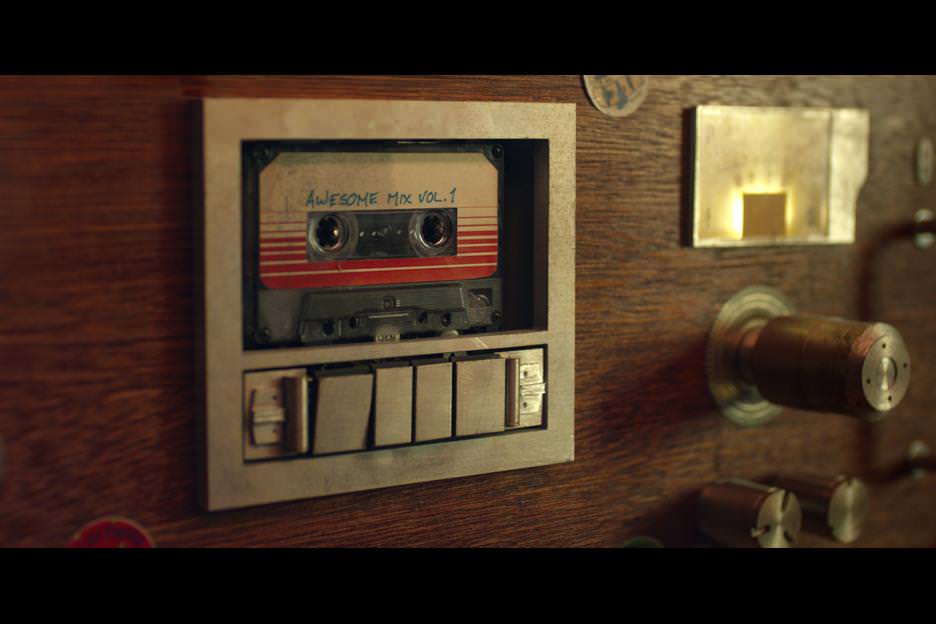
The Milano was built as a double-level composite set, comprised of the upper flight deck and the lower living quarters. The build took 14 weeks, requiring a crew with several areas of expertise. Gunn asked Wood to create the Milano in the spirit of a little boy’s dream come true, including a tape deck straight out of the 1980s. Because the Milano is both a ship and a refuge of sorts of sorts for Quill, a place where he can recreate his childhood on Earth, so Wood and set decorator Richard Roberts built a miniature world of nostalgia inside the Milano, creating practically everything you see, from the beds to the sound system to the ejector seats, from scratch. The ship’s got the tape deck, shag carpeting, Alf stickers, baseball cards and Troll dolls, to name a few of the knickknacks the 9-year old Quill had with him the night his life changed forever.
The Dark Aster
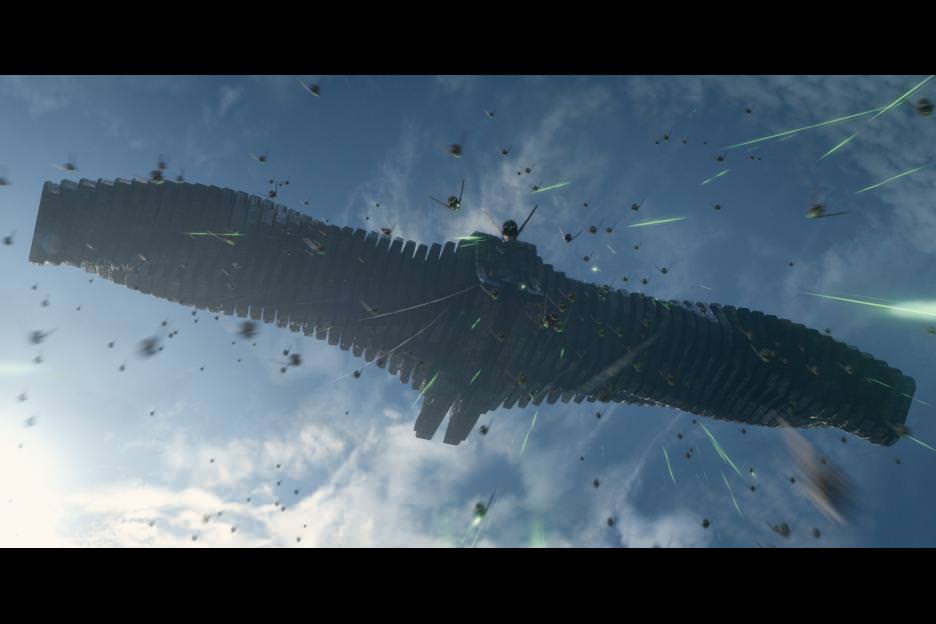
Ronan’s warship, the Dark Aster, was created to resemble a flying mausoleum. With a massive wingspan and a brutal design, Wood and his team limited the set dressing work to create a cold, colorless world made up of heavy concrete-like architecture fitting for a character whose sole ambition is revenge. Wood built a huge wall that serves as Ronan’s communication portal. The wall has carvings and an uneven finish and texture, and acts as a huge screen on which Ronan can give, and in one crucial case, receive commands. The huge wingspan is where the Dark Aster houses Ronan’s fleet of Necocraft.
Yet the interior of the Dark Aster has one somewhat whimsical element, the way it’s flown. Four Sakkaran pilots control the ship by manipulating glowing balls with synchronized hand movements. In order to pull this off, the filmmakers hired synchronized dancers so that the hand movements would actually be in sync.
The Score
Gunn played Tyler Bate's score during production. He had the composer complete some of the tracks early on so they could be played to set the tone for the scenes. To further improve the mood on set, Gun had the sound department pump out the '70s tunes that Quill loves to play from his old cassette player, including Blue Swede's "Hooked on a Feeling" and, perhaps the most appropriate song of all, David Bowie's "Moonage Daydream."



